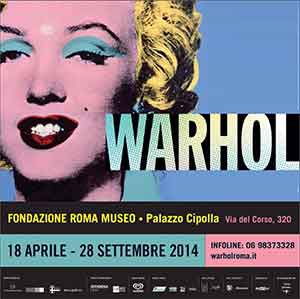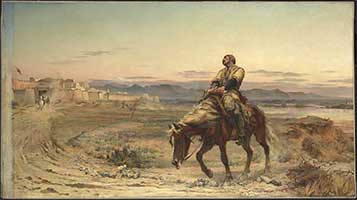Botero: a dreamlike, fantastic fairy-tale dimension
Francesco Carelli , University Milan, Rome, Bari
Fernando Botero, Columbian born but well known and well loved throughout the world for his immediately recognizable unique pictorial language. Which is his signature style ?
A dreamlike, fantastic fairy-tale dimension where a nostalgia is felt echoing through for a world that no longer exists or is breaking apart. Men, animals and vegetation whose features and bright colours immediately bring back memories of Latin America, where there is no place for nuance and where there is indeed a preference for vibrancy in form and narrative.
For his eighty-fifth birthday,I s payed tribute to his art with an exhibition of fifty of his masterpieces, many on loan from around the world, to retrace the over 50-year career of the master, from 1958 to 2016. The exhibition, Botero’s first major retrospective in Italy, opened in Rome on 5 May at the Ala Brasini of the Complesso del Vittoriano, Rome.
Botero believes very strongly in volume, in this sensuality that pleases the eye in painting. His art reveals a more complex world than might appear from an initial, quick glance at his works; they are the outcome of a delicate balance between mastery in execution and ability of expression.
And so, in his austere-looking portraits, in the nudes divested of all naughtiness, in the still lifes
where the concept of abundance reigns, the softness of the forms is perceived equally strongly, just as we can perceive in his bullfights and jugglers a sense of nostalgia and loss that captures the hearts of those who observe them.
The full forms, especially of the women, are the quintessential element in Botero’s work. Their redundant, original language accentuates the volumes and the three-dimensional plasticity. Botero expands the forms because this serves to help show the importance of colour, laid out in large, flat, uniform areas, without contours or shading.
The characters in his paintings are always devoid of recognizable moods; they feel neither joy nor sorrow.
Whether with card players, circus people, bishops, matadors or female nudes, Botero expresses no judgment. In his paintings, the moral and psychological dimension disappears. The people, in all theirvariety, simply live their everyday life, becoming the central characters of situations that are odd in their apparent obviousness. For Botero, painting is an internal necessity, but also an ongoing exploration toward the ideal painting that can never be reached.
Stateless, yet tied to the culture of his homeland, Botero was decades ahead of the current global vision of art without fences or boundaries, art that can be interpreted and appreciated at any place and time. We can appreciate the repeated references to classicism in
an absolutely contemporary vision that also reflects on politics and society. His painting does not fit into a genre, though it speaks through figuration, but invents its own autonomous genre around which the Colombian painter developed his art during a career lasting morethan half a century.
SECTIONS
First section –
Sculptures
When Fernando Botero said that “the three-dimensional or volumetric plasticity of the form is very important,” the seed of the sculpture was cast, a spark that could already by seen in the watercolours he had created as a boy. Indeed his “all-round” figures always triumph over the space and often appear to project out from the canvas towards the viewer. Thus the evolution of his characters into sculptural form would seem to have been the natural consequence, almost to be taken for granted. But it is not quite so simple. We should recall that the translation into bronze was one without colour, a fundamental element in Botero’s pictorial storytelling. Stripped of that quality of tone (which gives the story additional meaning and emotion) the result could have been lacking in stylistic characterization. But Botero solved the problem brilliantly by devoting particular attention to image type and volume, in order to harmoniously and persuasively conquer the space, now sometimes beautified with a fascinating solemnity, an intimate mystery. In this way, a connection with certain Etruscan statues emerges. Thus his world unfolds into the third dimension, a world where the image can eternally be suspended between desires, dreams and memories.
Second section –
Interpretations after the Old Masters
One of the distinguishing features of Fernando Botero’s painting is his remarkable ability to marry the Latin American culture of his origins – fuelled by hyperbole and by a taste for the fantastical – with Western culture. His references to Europe must of course be ascribed mainly to the culture of painting he came to know and love through Giotto, Piero della Francesca, Leonardo, Mantegna, Velázquez and Goya, important figures for reference during his travels in Italy and Spain in the early nineteen-fifties. These names would
later be joined by Dürer and Rubens, Manet and Cezanne, testifying to Botero’s intellectual curiosity and his desire to establish a relationship of ideas with the great European art of the past and of modernity, by looking to such masterpieces from the very beginning of his career.
The history of art is a practically infinite storehouse of images that may inspire but cannot be imitated. And indeed, Botero never does imitate. He recreates in his own way, producing images that aspire to their own autonomy. These are genuine re-interpretations, in which Botero – sometimes employing a certain well-meaning irony – pays tribute to world-famous paintings. He attempts, centuries later, to recreate their spirit, bringing it up to date and making it his own through his original idea of volume and space, of symbol and colour.
Botero revisits the genius of the great masters to translate it into a typical expression of his own “making”, to instil his own harmonic idea in the spirit decanted in a magical time.
We can see this, for example, in the portrait of Rubens and his Wife(2005) which retains the intimate atmosphere, revitalized by the cryptic stamp of Botero; in the monumental presence of the Infanta Margarita Teresa(2006) – homage to Velazquez; and in the delicate, cryptic and sensualreinterpretation ofLa Fornarina(2008) by Raphael.
Third section –
Still lifes
Still lifes play a major role in Botero’s work. Beginning in the late nineteen-sixties they regularly
fed the appeal of an image that goes far beyond the simple composition of fruit and objects on a table, to become at times a real world in itself, rich and diverse, governed by strict rules.
” When I paint an apple or an orange, I know that people will be able to recognize that it is mine and it was me who painted it, because what I try to do is giveeach element I paint, down to the simplest ones, a personality that comes from a deep conviction.”
In his still lifes, the shapes of all the elements, sometimes equatable to solid geometrical figures, offer a narrative and spatial impact to nullify any possible realistic dispute. Oranges and apples do appear as such, as do pitchers or tables, apart from an expansion in volume that is necessary to respond to those declared needs that have made Botero the inimitable artist he is known as worldwide. Similarly, colour is an additional element of refined balance.
Fourth section –
Religion
Religion plays an important role in Botero’s painting. In this context religion stands as a practical example of the supernatural that permeates everyday life, translated into surprise, into ecstatic contemplation, into a form adapted to a thought ready to uniformly mould things and people.
Fifth section –
Politics
In his painting there is a deep-rooted popular dimension, a deep attachment to his own culture, to the ever-present memory of day-to-day life in Medellín. These features are also made evident in his paintings that focus on power, politicians and the military. They are works in which the artist does not intend to express judgment on the characters he depicts: presidents, ministers, ambassadors. What attracts him is the multi-coloured elegance of the representatives of power and the First Ladies, the Baroque splendour of the rooms. These paintings, with their atmosphere of suspension, provoke smiles, conquer the curious gaze.
Botero’s tone is that of an independent narrator, a storyteller with a libertarian accent whose defining feature is the well-tempered wisdom of his smile and an innate sense of irony.
Sixth section –
Latin American life
” My painting contains a world that I knew when I was very young, in my land. It is a kind of nostalgia and I have made it the central aspect in my work. […] There is complete communion with my country.”
For the young Botero, there could be no other reference points but the tables and multi-coloured sculptures of colonial art, the direct and essential language of popular art and, in purity of form, pre-Columbian art.
Botero’s narrative fabric comes from the stories and the climate of his native land, where he continues to see himself reflected and from which he draws nourishment.
In the scenes of everyday life he brings to his canvases, the people he depicts are deeply understood in their role as dispensers of images so far removed from our present life: they watch us from their enchanted landscape, exhibiting a contrite impassivity. Their actions enjoy a slow harmony that involves gestures, attitudes, settings and objects.
Seventh section –
Nudes
Botero’s nudes are reflected in volumes of extraordinary feminine grace despite the Rubensian
heft of the bodies; the stories seem immersed in a kind of primordial; consequently the behaviours themselves enjoy a naturalness that makes us accept as obvious the atmosphere where the scenes play out. This is one of the prerogatives of Botero: making the viewer feel emotional synchronicity with the images from his imagination.
We are therefore struck by Adam and Eve (2005) whom we see in astonished ingenuity accosted by the fiery serpent that appears suddenly from above like the arrow of temptation; the woman in
Eighth section –
Circus
In Mexico, where he often spent the winter months, Botero fell in love with the circus. He was drawn to the characters, the colours, the movement, the life and the many stories connected with a spectacle that is ancient and modern at the same time, immortalized by such artists as Picasso, Léger, Chagall and many others.
” A beautiful and timeless subject”, said the artist on more than one occasion. He depicts, describes and illustrates circus life in all its fullness, focusing on the work of the people engaged in the preparations, or lingering during breaks before or after the show, when the members of this great family come together to share the everyday, to rest from their labours and to enjoy moments of socialization.
Botero has given us a gallery of truly beautiful portraits, from Pierrot to Harlequin, from the ele
phant to the horses: a multi-coloured universe and a kaleidoscope of colours.
Indeed, if the circus is the physical and mental place where amazement is the essential rule behind the functioning of its complicated mechanism. We can see the validity of this affirmation just by looking at a few works. In Circus People with Elephant (2007) the characters are behaving according to the customs of their environment: the acrobat repeats his gymnastic exercises, the clown appears in his costume mounting long stilts, the fat lady poses with a monkey dressed as a child on her knee, under the placid bulk of the pachyderm. This is the day-to-day that attracted Botero’s gesture reconstructing the universe and delivering it to our admiring attention.



